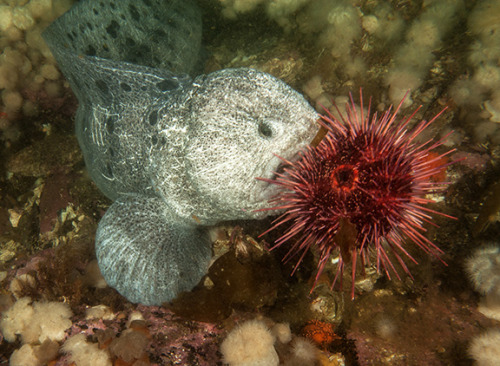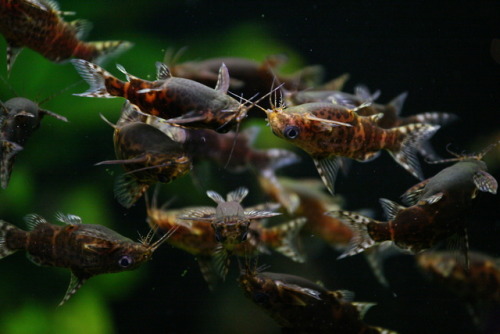#osteichthyes

Indian & Pacific Oceans//Conservation Status Unknown//Bony Fish//image source
Fun Fact: Garden eels feed on passing plankton. It is very rare for one to completely leave its burrow.
Wolf eel (Anarrhichthys ocellatus) preying on a sea urchin. Their powerful jaws and ossified mouths can effortlessly shred sea urchins and other hard-shelled animals like shellfish and crabs.
Post link
The Mexican Blind Cavefish (Astyanax mexicanus) may look totally different to the Mexican Tetra (bottom left), but is in fact the same species. Adaptations to life in pitch dark caves such as heightened sense of smell, as well as use of the lateral line organ, have made vision and pigmentation unimportant.
The two different morphs made this species an excellent candidate for research into circadian rhythms and metabolic processes, which you can read about here.
Photos:Josh More,Damian Moran
Post link
Upside-Down Catfish (Synodontis sp.) are found throughout freshwater habitats in Africa. Their belly-up swimming behaviour is thought to be an adaptation to algae grazing on the underside of logs. Also known as “squeakers”, they can rub their pectoral fin spines to produce sound when they are frightened or disturbed.
Photo:Mun Sing
Post link






